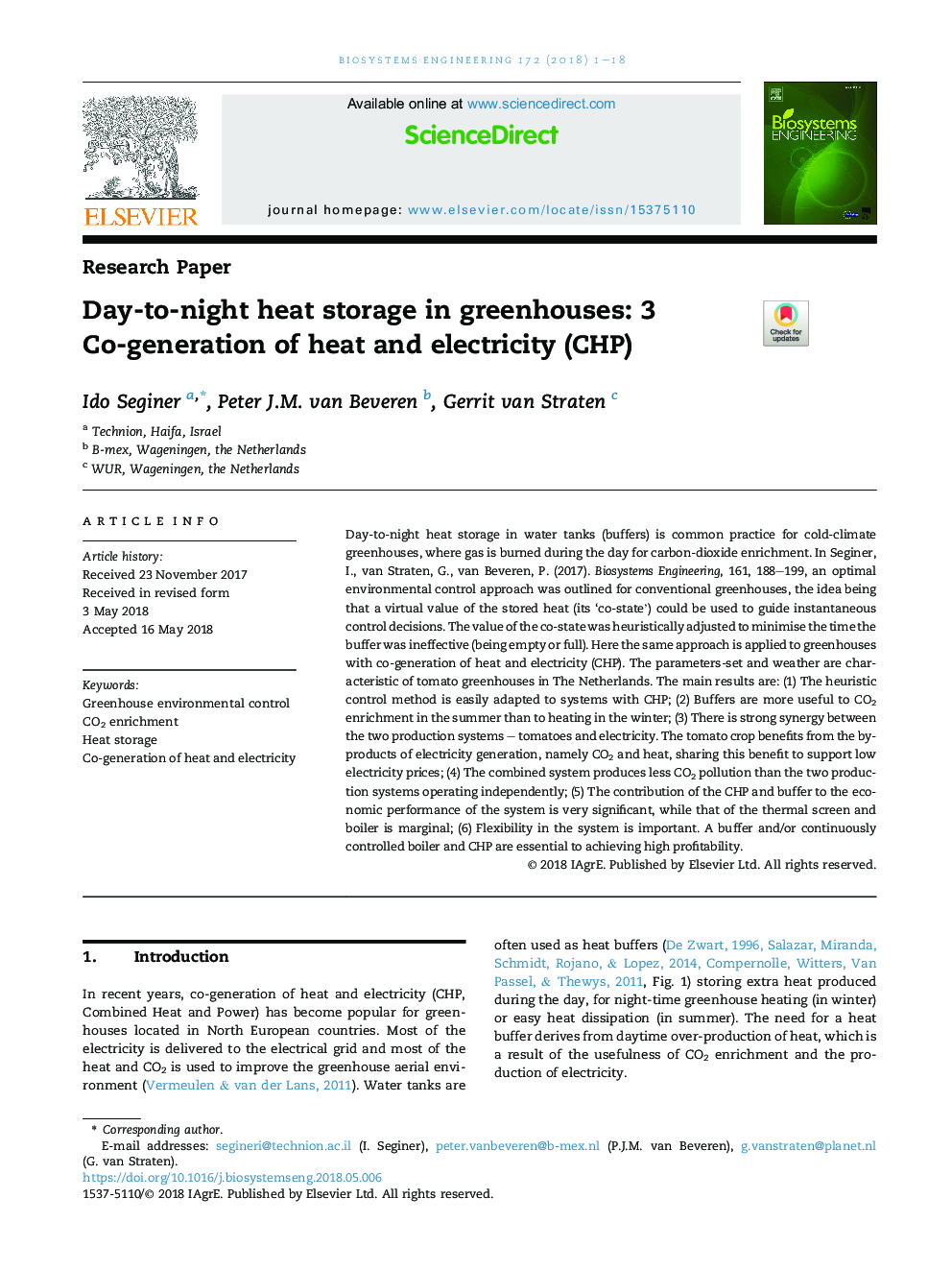| Article ID | Journal | Published Year | Pages | File Type |
|---|---|---|---|---|
| 8054617 | Biosystems Engineering | 2018 | 18 Pages |
Abstract
Day-to-night heat storage in water tanks (buffers) is common practice for cold-climate greenhouses, where gas is burned during the day for carbon-dioxide enrichment. In Seginer, I., van Straten, G., van Beveren, P. (2017). Biosystems Engineering, 161, 188-199, an optimal environmental control approach was outlined for conventional greenhouses, the idea being that a virtual value of the stored heat (its 'co-state') could be used to guide instantaneous control decisions. The value of the co-state was heuristically adjusted to minimise the time the buffer was ineffective (being empty or full). Here the same approach is applied to greenhouses with co-generation of heat and electricity (CHP). The parameters-set and weather are characteristic of tomato greenhouses in The Netherlands. The main results are: (1) The heuristic control method is easily adapted to systems with CHP; (2) Buffers are more useful to CO2 enrichment in the summer than to heating in the winter; (3) There is strong synergy between the two production systems - tomatoes and electricity. The tomato crop benefits from the by-products of electricity generation, namely CO2 and heat, sharing this benefit to support low electricity prices; (4) The combined system produces less CO2 pollution than the two production systems operating independently; (5) The contribution of the CHP and buffer to the economic performance of the system is very significant, while that of the thermal screen and boiler is marginal; (6) Flexibility in the system is important. A buffer and/or continuously controlled boiler and CHP are essential to achieving high profitability.
Related Topics
Physical Sciences and Engineering
Engineering
Control and Systems Engineering
Authors
Ido Seginer, Peter J.M. van Beveren, Gerrit van Straten,
